Introduction
The Thypoch Simera 35mm f/1.4 Z is the 2nd lens provided by Thypoch for review. Once again, it’s a fully manual lens without electronic coupling. It was introduced in the Leica M mount (w/macular linkage), but it’s now available in all mirrorless system camera mounts except MFT. The tested sample came with a Nikon Z mount and retails for about $649 USD. The Simera lenses are available in two different color schemes—black and silver – with the latter being more attractive, in our opinion. Strangely, E-mount users are missing out on the silver option.

The Simera 35mm f/1.4 is slightly smaller than the previously reviewed Simera 28mm f/1.4, and its design is also somewhat simpler with no ED element. However, it does feature a floating system for close-focus correction which is a rather seldom treat. Reminiscent of Leica lenses, Thypoch provides a square-shaped, anodized metal lens hood, contributing to the premium feel. The focus ring has a crescent-shaped focus adjustment tab and turns silky smooth. The aperture ring responds with snappy clicks, and a clickless mode is available. Just like the 28mm f/1.4, the 35mm f/1.4 has a little trick at hand. In homage to the Kern Macro-Switar lens for Alpa 35mm cameras, the Simera incorporates a vintage-inspired depth-of-field indicator where a marker changes the color feedback in the holes of the central section from black to red when stopping down. Very cool, indeed. Weather sealing is not provided.
| Specifications | |
|---|---|
| Optical construction | 9 Elements in 5 Groups (1x aspherical, 3x HRI) |
| Number of aperture blades | 14 |
| min. focus distance | 0.45m |
| Dimensions | φ54×66.4 mm |
| Weight | 310g |
| Filter size | φ49mm |
| Hood | square-shaped (bayonet mount, supplied) |
| Available Mounts | Nikon Z, Canon R, Sony E, Leica M, Fujifilm X |
| Other features | “Active” Depth-of-field indicator, Floating System |
Distortions
The Simera 35mm f/1.4 produces a negligible degree of pincushion distortion (~0.24%).
As hinted above, auto-correction isn’t available – it’s an all-manual lens.
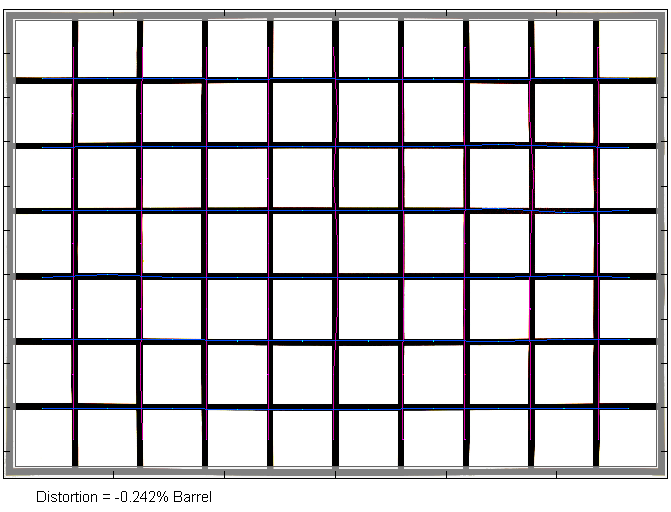
Vignetting
The vignetting characteristic is typical for such a fast wide-angle lens and almost identical to its 28mm f/1.4 cousin. At f/1.4, the light falloff is very obvious at 2.6 EV (f-stops). Stopping down by 1 f-stop reduces this substantially, and the vignetting settles around 1.2-1.3 EV (f-stop) from f/2.8 onward.

MTF (resolution) at 45 megapixels
The Simera 35mm f/1.4 doesn’t attempt to reach the lofty performance heights of the best AF lens, but it renders images in a vintage-style. Rather than providing edge-to-edge sharpness, it goes after what some may describe as a 3D pop. You probably won’t see this at f/1.4 and f/2 because the image quality is fairly subdued, with low contrasts. There is, however, a jump in quality at f/2.8. Here, the dead center reaches excellent levels, and the outer image field sharpens to good-to-very-good results. The best quality is reached at f/4 with another boost of the broader center performance. Diffraction has a higher impact from f/8.
The centering quality of the tested sample of Okay. Some field curvature is present.
Please note that the MTF results are not directly comparable across the different systems!
Below is a simplified summary of the formal findings. The chart shows line widths per picture height (LW/PH) which can be taken as a measure of sharpness. If you want to know more about the MTF50 figures, you may check out the corresponding Imatest Explanations.

Chromatic Aberrations (CAs)
Lateral CAs are high at f/1.4, with an average pixel width of 2px at the image borders. Stopping down results in a gradual decrease of the CA until it reaches a moderate ~0.8px from f/4 onward.

Bokeh
Thanks to its large aperture of f/1.4, the Thypoch lens can produce some decent object separation at moderate focus distances, so let’s check the quality of the bokeh.
Out-of-focus highlights are very nicely rendered at f/1.4. The inner zone of the discs is very clean, with no obvious outlining. Stopping down to f/2 and f/2.8 maintains the circular shape near the center.

The above applies to the center. When looking at the whole image field, we can observe a rather pronounced deterioration of the disc shape the more they more toward the edges. The outer highlights are also developing some outlining. For softer highlights, you should stop down to at least f/2 or, better, f/2.8.
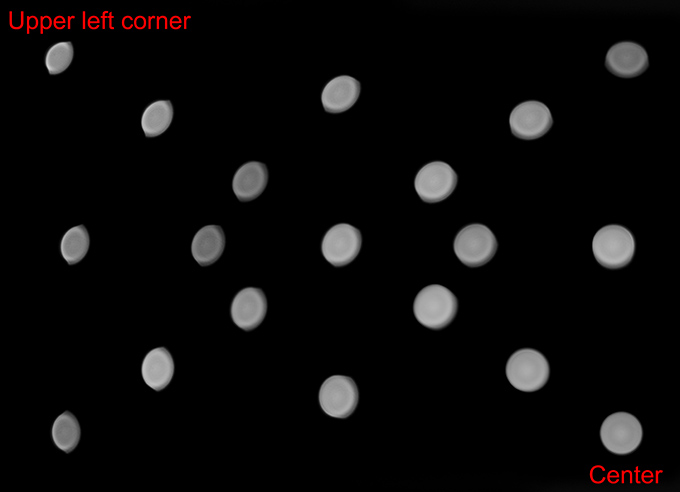
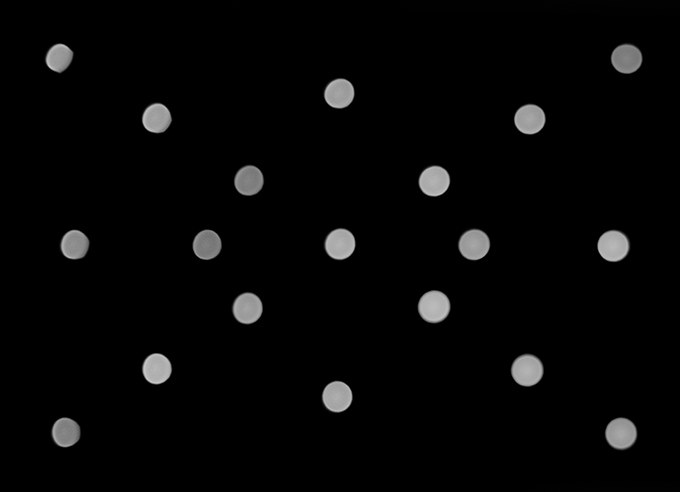
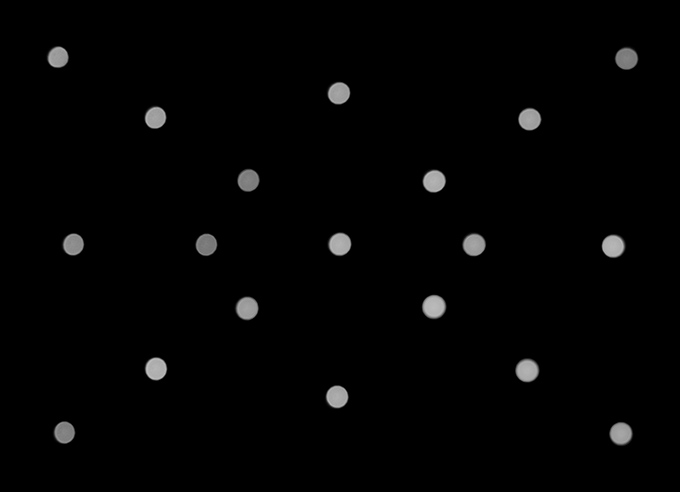
The smoothness of the blur in the focus transition zone is good in the more critical background – shown to the left below as usual. The foreground blur is just a tad harsher, but still pretty good.

LoCA (Bokeh Fringing)
LoCAs, aka axial CAs, aka bokeh fringing, is about color fringing that is purplish front and greenish beyond the focus point. The Simera 35mm f/1.4 has a relatively simple design, so it doesn’t come as a surprise that there’s some noticeable fringing at f/1.4 and f/2. The effect has faded at f/2.8 and it’s mostly gone from f/4.
If you scroll through the aperture range below, you may also notice that the focus point moves substantially toward the rear. Focus shifts (RSA or “Residual Spherical Aberration”) can be an issue in close-focus scenarios. It’s a good idea to check your focus indicator in the viewfinder when changing the aperture.
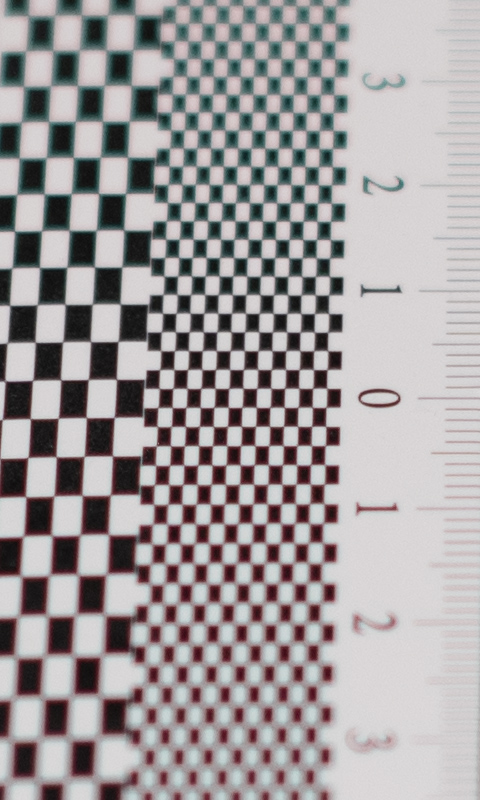
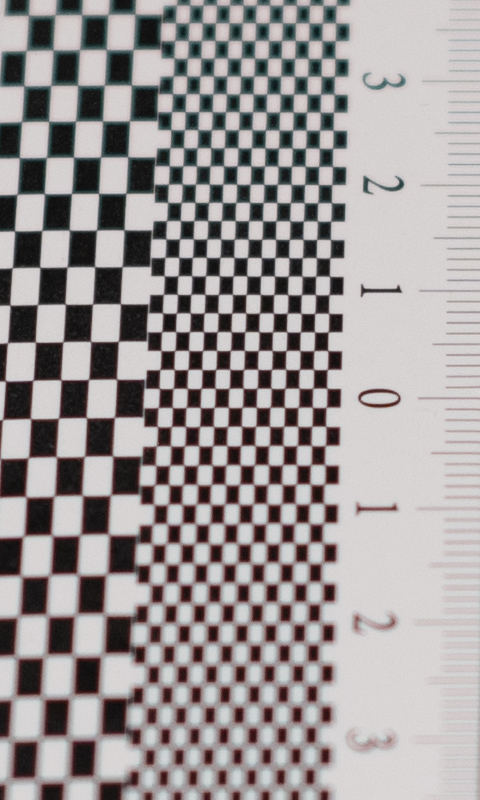

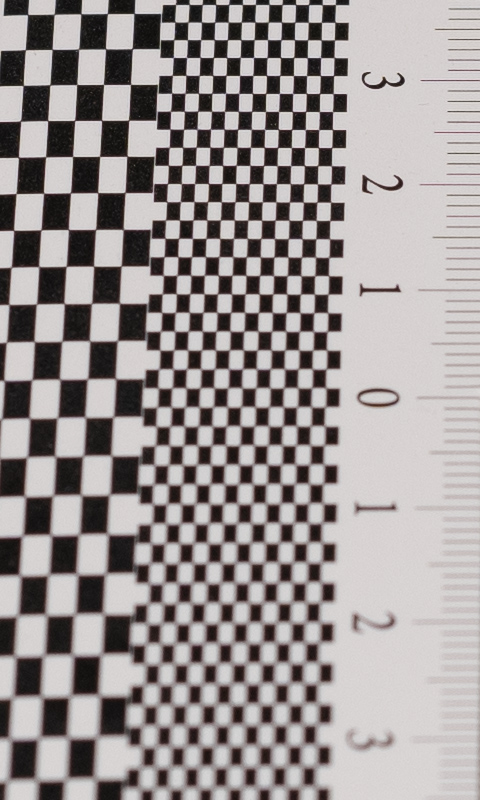
Sun Stars
Sun stars are a diffraction effect from light passing through where aperture blades intersect. The Simera lenses feature no less than 14(!) aperture blades. Many aperture blades are usually not a good idea for sunstars but the 35mm f/1.4 does a good job nontheless. More pronounced light rays are visible from f/5.6, they are good at f/8 and best beyond. The rays aren’t as nicely rendered as on the 28mm f/1.4 but they are still pretty decent.

Sample Images
If you want to download full-size images, click on the “view” link in the image preview or access the gallery directly by clicking on the lens name link below. All images are post-processed.
Compared to the Thypoch Simera 28mm f/1.4, the Simera 35mm f/1.4 is more "classic" in terms of optical performance. At large aperture settings, the results are quite soft and low contrast. If you are after a vintage look, this may not be a bad thing. However, unlike true vintage lenses from the 60s and 70s, the lens is capable of rendering very sharp and contrasty results at medium aperture settings. The vignetting is high at f/1.4 but acceptable when stopped down to f/2.8. Image distortions are a non-issue. Lateral and axial CAs are on the high side at large apertures. The quality of the bokeh is pretty good if you stop down a tiny bit, at least. There is some focus shift going on when stopping down, so you should focus with a stopped-down aperture unless you operate it at f/8 or beyond. And you better keep the lens hood attached all the time because the lens is prone to flare.
The true highlight of the lens is the build quality. Thypoch went the extra mile to create a special lens with one of the highest quality perceptions that we experienced from a manual lens. It's an all-metal lens body with very smooth control rings. The attention to detail is especially obvious with respect to the depth-of-field indicator, which gives you a visual indicator by changing the colors - mechanically, of course, because this is a fully manual lens without electronic coupling. The square, metal lens hood adds to the classic feel as well.
Some users complain about the clinical performance that modern lenses give you. If you are in this camp or interested in video with a vintage touch, this fairly exotic lens may be something for you. When compared to the Thypoch Simera 28mm f/1.4, we'd still prefer the latter, though.
-
Optical Quality
-
Build Quality
-
Price / Performance


